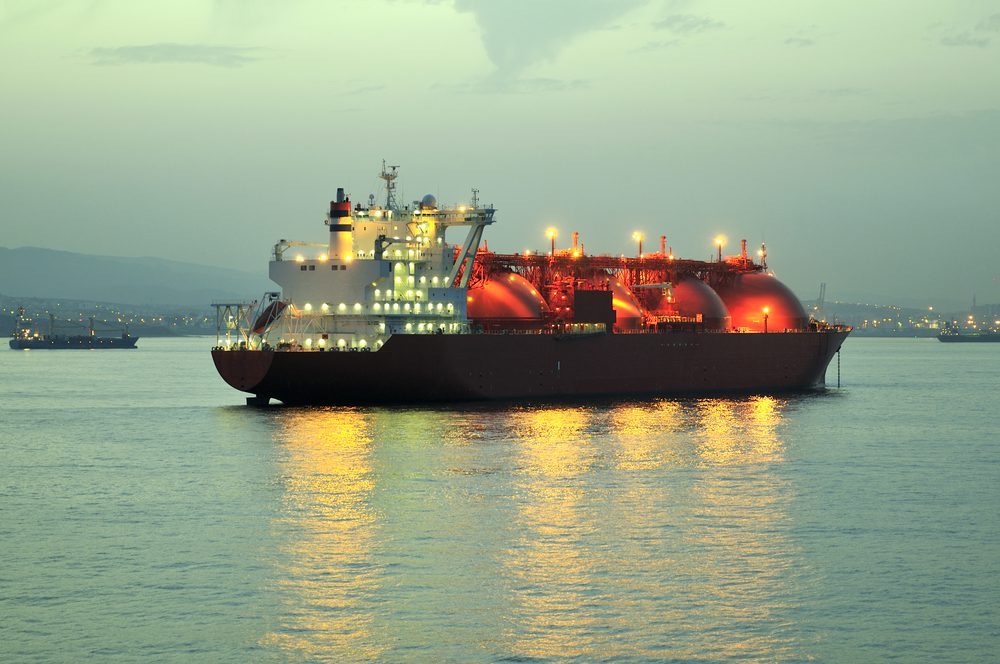By Rebecca Penty
Dec. 5 (Bloomberg) — Petroliam Nasional Bhd.’s deferred decision on a C$36 billion ($32 billion) liquefied natural gas project in British Columbia is bringing to the fore Canada’s struggle to compete with the U.S. on costs.
Petronas, as the Malaysian state-owned producer is known, is pushing contractors to bring costs closer in line with U.S. rivals as it tries to keep the first exports to Asia on track to start by 2019, Michael Culbert, chief executive officer of the Pacific NorthWest LNG project, said.
“We’ve got real competition that is coming out of the Gulf Coast projects,” Culbert said by phone yesterday, estimating U.S. suppliers can deliver LNG to Asia for $1 to $2 less per million British thermal units than Canadian projects. “With the changing oil prices, contractors may not be as busy as they thought they would be.”
While U.S. terminals are already being built, none of the proponents in Canada have decided to proceed. Pacific NorthWest LNG would be the country’s first large project to come online among a handful put forward by Royal Dutch Shell Plc to Chevron Corp.
Petronas joined BG Group Plc in pushing back a decision on its plans in Canada as oil trades close to five-year lows. BG cited competition from U.S. supplies when it deferred its decision in October.
Backers of LNG projects in British Columbia face higher costs than Gulf Coast proponents such as Sempra Energy because of the pipelines required across two Canadian mountain ranges, the lack of existing infrastructure on the Pacific Coast and negotiations with aboriginals.
Gulf Terminals
U.S. projects have caught up to Canadian rivals that received export approvals to start lining up buyers earlier and are now passing them by. Gulf Coast proponents adding export capabilities to existing LNG import terminals need less new equipment and have access to a network of pipelines already linked to vast supplies of gas in shale formations, as well as a larger labor pool.
Petronas said Dec. 3 that lower oil prices and high costs have worsened the return outlook for the project, delaying a decision on whether to build a terminal to chill the gas and ship it to Asia. The company had planned to make a final decision by mid-December.
Even with the drop in crude prices crimping the company’s ability to finance projects and threatening long-term LNG contracts tied to oil, Petronas still has the ability to get Pacific NorthWest LNG operating on schedule if it makes a decision by mid-2015, said Cameron Gingrich, a director at Solomon Associates LLC’s Ziff Energy division in Calgary.
Deliveries Window
The delay in deciding gives the company an opportunity to seek lower costs and avoid missing a window for deliveries that would push the project back at least seven years, Gingrich said.
“They’re looking to have the federal government, the B.C. government and their contractors all sharpen their pencils,” Gingrich said.
The C$36 billion investment estimate for Pacific NorthWest LNG includes the terminal as well as drilling, the construction of a pipeline and the acquisition of a gas producer in 2012 to supply the project.
The engineering and construction costs need to fall, Culbert said. Petronas also continues to ask the federal government to consider allowing LNG developers to more quickly deduct the costs of building projects from taxes, he said.
Price Dependent
“A positive decision in the future is dependent on rising oil prices but we also feel that a change in the capital cost allowance policy in Canada may have a positive impact on LNG economics,” analysts at PI Financial Corp., led by Jason Zandberg, wrote in a note yesterday.
The federal finance department didn’t respond to a request for comment.
Regardless of whether Petronas lowers costs, it’s too late for any Canadian projects to start operating before the end of the decade because of their complexity, Octavio Simoes, president of Sempra’s LNG division, said in a phone interview. Sempra is developing an export terminal under construction at Cameron LNG, an existing import facility in Hackberry, Louisiana.
“The window of opportunity is missed,” Simoes said.
A wave of other supplies globally means the first Canadian LNG exports from a large project will probably be pushed to 2023, Simoes said. Asian utilities will probably buy Canadian LNG even with its higher cost to diversify supplies, he said.
Culbert is still hopeful the project can avoid delays.
Moving Aggressively
Petronas and its partners are moving “aggressively” on a decision next year for Pacific NorthWest LNG, which requires four years of construction, Culbert said.
To prove it has the supplies to back the LNG exports, Petronas plans to maintain its pace of drilling, he said. The company is on track to spend C$2.5 billion in gas field development in northeastern British Columbia this year.
Costs have risen in part because the pipeline was originally proposed to extend 750 kilometers (466 miles) and now is planned as a 900-kilometer conduit, he said.
“We’ve got to continue to work to trim that as much as possible,” Culbert said of the costs. “We’ve got over 60 percent of our LNG committed so we’re a project that’s come a long ways and we’re in a good position.”
–With assistance from Christopher Donville in Vancouver and Andrew Mayeda in Ottawa.
Copyright 2014 Bloomberg.
Unlock Exclusive Insights Today!
Join the gCaptain Club for curated content, insider opinions, and vibrant community discussions.

 Join The Club
Join The Club







![A screengrab of a map showing an earthquake Mindanao, Philippines on Dec 2, 2023. (Image: US Geological Survey [USGS])](https://gcaptain.com/wp-content/uploads/2023/12/Screenshot-2023-12-02-at-10.45.17-AM-copy.png.webp)





